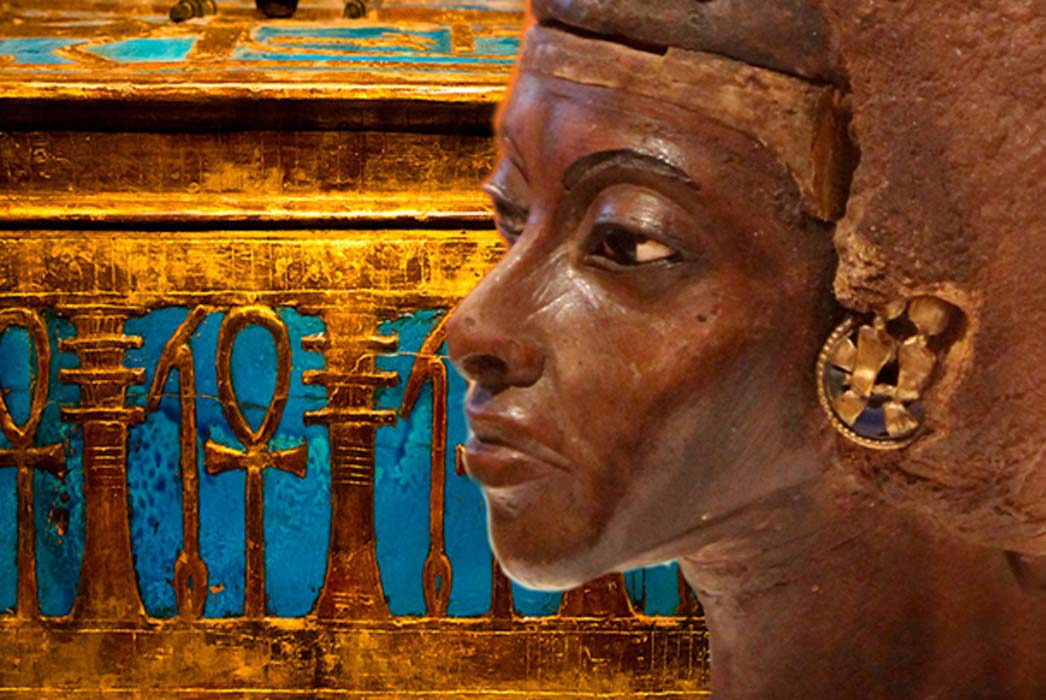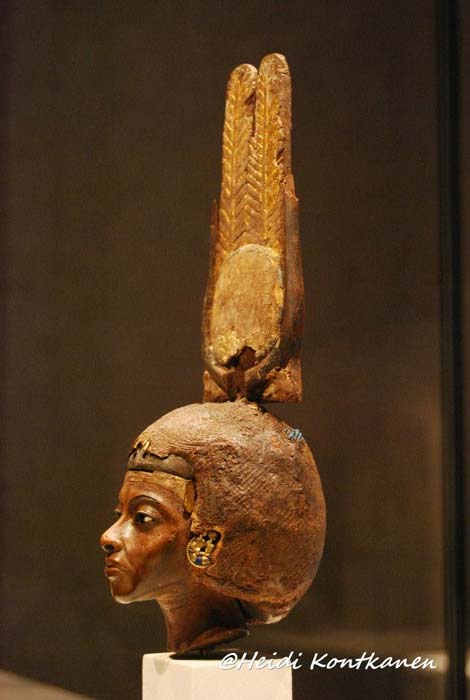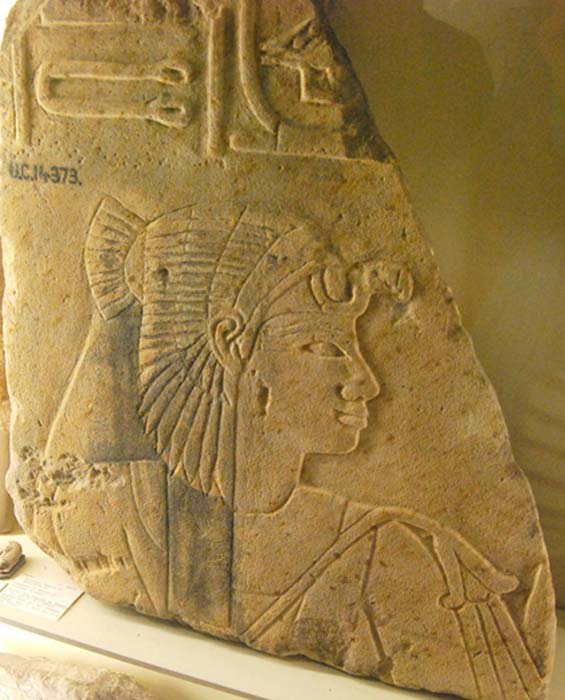
Dazzling Nebmaatre: Queen Tiye, the Matchless Matriarch—Part II
In March, 1898 within a dark side chamber of Amenhotep II's tomb (KV35) the famed French Egyptologist, Victor Loret gazed upon the face of a severely damaged mummy of an ancient woman, which to him exuded “a noble and majestic seriousness”. This lady had guided her son, Akhenaten – the first monotheist in history – when he became pharaoh; and had gifted that most tender of all mementos – an auburn lock of her hair – to her grandson, Tutankhamun. One of the foremost women of her time who was an able companion to her illustrious husband Amenhotep III, the matchless matriarch Queen Tiye was a formidable leader in her own right.
[Read:Dazzling Nebmaatre: Amenhotep III and the Age of Opulence]

Head of a statuette of Queen Tiye, wearing a double-feathered crown, made of yew wood with silver, gold and glass. Neues Museum, Berlin. (Photo: Heidi Kontkanen)
ALL THE PHARAOH’S WIVES
Amenhotep III married many women during his lifetime and lorded over a large harem filled with foreign princesses and concubines. Gilukhepa, daughter of King Shuttarna II of Mitanni was one of the first attested foreign princesses to marry the king in his Regnal Year 10. When she arrived bearing great treasures and an entourage of 317 ladies-in-waiting, the pharaoh exclaimed: “It's a marvel!”

Detail from a sandstone block fragment from the mortuary temple of Amenhotep II depicts Princess Sitamun wearing a vulture headdress and holding a floral scepter. Petrie Museum, London. (Photo: Heidi Kontkanen)
During his first Heb Sed festival to commemorate 30 years on the throne, Amenhotep elevated his eldest daughter Sitamun as Great Royal Wife at Malqata palace. Her jar-labels in this location, where she was given her own quarters, outnumber those that mention her mother. Sitamun is, however, best known for an exquisitely crafted chair found in the tomb of her grandparents, Yuya and Tjuya. The sovereign married yet another daughter of his, Iset, during the Heb Sed celebrations to mark Year 34 of his reign. Nebetnehat, Henut, and possibly a daughter, Henutaneb, were some of his other wives.

The richly decorated wooden chair or “throne” of Princess Sitamun that was found in the tomb of her grandparents, Yuya and Tjuya. Egyptian Museum, Cairo. (Photo: Heidi Kontkanen)




